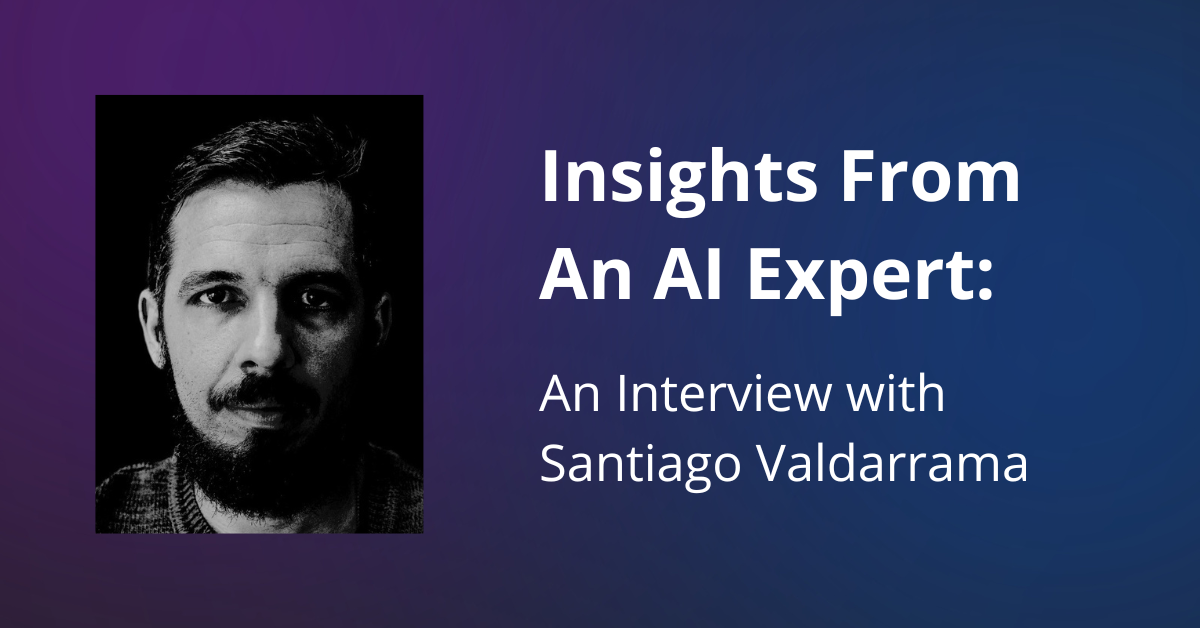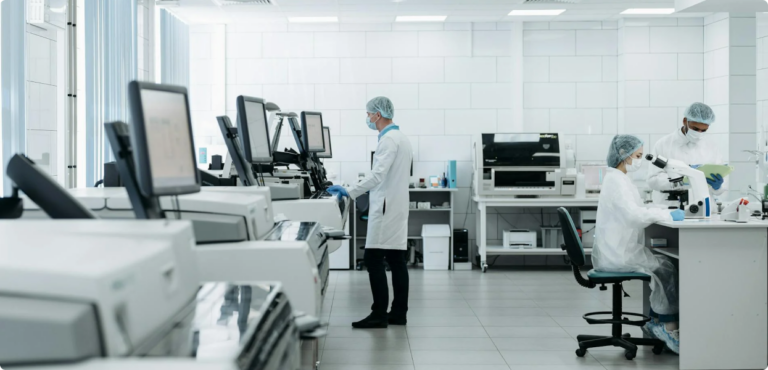Santiago Valdarrama, an AI and Computer Vision expert, was recently featured on a webinar addressing trending topics in AI/computer vision. This blog will provide an overview of Valdarrama’s takes on the topics, including the important role of data in computer vision, deep learning vs. classical computer vision, and AI bias.
Hot Topic # 1 The Role of Data in Computer Vision and AI
Industries from automotive to medical to agriculture rely on computer vision, a type of AI that obtains and analyzes visual data like pictures, maps, or videos to help humans make decisions or improve processes.
Computer vision is especially useful for tasks like automated visual inspection, monitoring, and the automated creation of visual content. Common uses of computer vision we encounter daily include pedestrian detection in self-driving cars, medical imaging (i.e., analyzing X-rays or CT scans), or a plant species identification app on your phone.
The selection and curation of data is particularly important for computer vision, as good, clean datasets are used to train the models and impact accuracy. Messy data, or data that is inaccurate, incomplete, contains duplicates or is in any way corrupted, compromises model training and eventually delivers incorrect insights. While everyone talks about the model, computer vision apps truly rely on good, clean data to function properly.
But, the data needed for computer vision presents unique challenges. Visual datasets can be huge, and enterprises often lack the resources and time to clean and curate their visual data. Data Science teams, particularly those working in computer vision, end up spending 50% of their time parsing and sifting through their data.
Key takeaway? This is why Solutions like Data Explorer, which transform time-consuming tasks like image search into trivial operations, will be increasingly useful as the amount of visual data to clean and curate continues to explode across industries.
Hot Topic # 2 Classical Computer Vision vs. Deep Learning
Classical computer vision has been in existence for decades. For example, we have seen this in effect in factory automation using robots in the last few decades. It works in well-defined environments and works great in a cookie-cutter environment.
Over the last few years, we have seen a huge shift from the classical approaches and algorithms to deep learning-based models. New systems are more robust, generalize better, and can solve problems previously considered hard or impossible.
With the advancement of related infrastructure supporting hardware and software, many industries have fully shifted their attention to DL-based solutions, and new industries have started using computer vision solutions. For example, we see surveillance, robotics, and food inspection shift their attention to DL-based solutions.
However, the DL solutions come at a cost. Inference speed requires dedicated and costly hardware. Achieving high accuracy often requires large amounts of training data that, in many cases, are hard to acquire, and finally, models often behave like black boxes, vulnerable to adversarial attacks, with no explicit reasoning for failure.
Remembering the downsides of DL solutions, various inspection systems, quality checks, or other tasks that are always completed in controlled environments could still benefit from classical approaches with no need to be changed in the near future.
Key takeaway? Modern tech has moved to rely on DL solutions, although classical computer vision still has its place.
Hot Topic # 3 Bias in Computer Vision
As AI has saturated more of our lives, so has awareness and discussion of AI bias. AI bias is the phenomenon where a system produces results that are systemically prejudiced.
AI bias happens when an AI model delivers biased results as a result of inaccurate or incorrect assumptions “taught” to or made by the model during training. Very often, this bias is a result of imbalanced datasets, where one characteristic shows up more frequently. Think of a job application sorting process where the majority of applicant resumes are of the same gender and race, so the AI platform incorrectly deems that applicants from that gender or race are the “correct” or best resumes for the human HR team to look at.
In a computer vision-based application, like in any other AI-based one, a bias could result in dire consequences, which is why data selection and minimizing unintended biases when training computer vision models is paramount.
Key takeaway? As we continue to create more visual data and incorporate AI into our daily lives more and more, those who work with AI and CV should confirm the quality of their data, remove biases from it, and confirm their models’ output is bias-free.
Learn more on these hot topics
Want to dive deeper into computer vision, deep learning, the role of data in AI, and bias in computer vision?
Watch the full webinar here: https://www.youtube.com/watch?v=nnGNO-Blhms&t=1s




No Responses